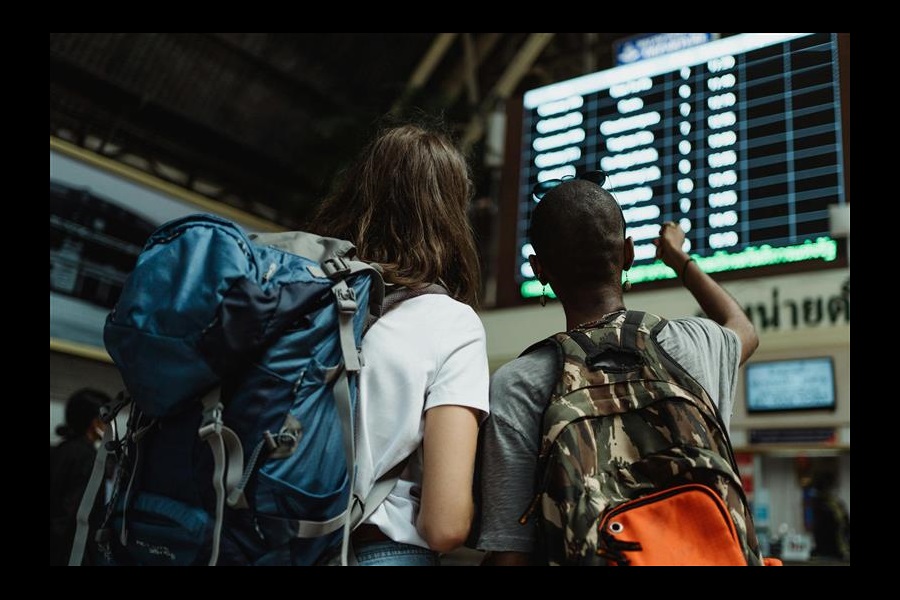In an ever-fluctuating world, it can feel like everything is in a state of upheaval when in fact, it is simply changing. If we, as brands, understand the forces of change, we can capture it and meet people where they are.
In this article, we'll be exploring three key forces that are driving change in the new era of travel.
1. The Illusion of Individualism
With the economy, politics and culture in perpetual uncertainty, people are actively choosing to focus on themselves – the only thing in their control. They’re investing their time and energy into things that give them a positive ‘Return on Me’ – they want to achieve their goals and feel better, smarter, fitter, happier, and even more productive – even while travelling.
Travel is now a key life milestone, status symbol and top priority, all wrapped into one. It’s more accessible and immediate than other conventional life milestones (weddings, starting a family or buying a home) that are increasingly out of reach, especially for younger travellers. As a large, emotionally-loaded purchase, travellers are drawn to brands they have an affinity with, resulting in brand predisposition becoming a vital metric for travel.
The shift to ‘over-individualism’ – where people are intentionally seeking out unique tastes, interests and experiences that light their inner fire – is one of many contributing factors to a fragmented cultural landscape. Perhaps more importantly, people want to express that they are doing something for themselves. They want to fuel their life purpose and personal growth by doing something unique in their travels but need the reassurance and trust that it will live up to their expectations – often signing up for something only slightly ‘off-the-beaten track’.
But in a landscape where most people are sourcing ‘unique’ travel inspiration from the same platforms or viral content, this need for individualism conversely leads to a tension between a culture of gatekeeping or over-sharing. A tension we see play out across holidays around the world as local gems become overcrowded and devoid of any locals or uniqueness – cue the ‘Angus Steakhouse’ social media storm, convincing visitors that its Leicester Square establishment is a ‘hidden gem’ Londoners were trying, and failing, to gatekeep. There is instead a rise in dupe destinations to avoid crowds, or alternatively, ethical holidays that contribute (less) to gentrification.
2. (Truly) Always-On Travel
Though this is an established marketing principle, it has never been truer in travel. With more options and availability than ever before, we’re seeing a far more fluid, open, experience-led approach to decision-making when it comes to travel.
Enter the era of ‘post-peak season’, where climate change is directly impacting travel plans. Shoulder season deals are now being seized to avoid crowds and inflated costs, extending a trip to work remotely and taking extended periods of leave (golden gap years, time off for personal growth, adventures or learning) becoming a reality.
These very real changes in behaviour and decision-making beg the question: should travel brands be reconsidering their media spend beyond the traditional New Year and Summer holiday pushes? These times are relevant but shouldn’t be our sole focus. Do we need to create new ‘entry points’ for those travelling, such as Tourism Ireland’s ‘Home of Halloween campaign’? The distinctive multi-market campaign celebrates the Isle of Ireland’s unique Celtic heritage and modern-day festivities to attract visitors for the autumn holidays. Source: Tourism Ireland 'Home of Halloween' Campaign
Source: Tourism Ireland 'Home of Halloween' Campaign
It is essential for travel brands to embrace Difference, break category codes and escape the ‘sea of sameness’ we see in travel advertising. Defining what your brand, destination, offer or experience brings to the world, and the relevance you can play to at key moments throughout the year, will help broaden your reach and the right to have always-on conversations with your target consumers.
3. The Rose-Tinted Revival
In this context of uncertainty, people are not only seeking nostalgia and self-soothing but yearning for the (often illusory) simplicity and comfort of the past. This revival is manifested across sectors, particularly within Travel and Hospitality, as a ‘boomerang effect’: a return to the tried and tested, playful, whimsical, comforting, and reassuring ‘simpler’ times and experiences – even those they’ve never experienced themselves.
In the Travel sector, this nostalgia is driving a return to in-person, in-the-moment experiences and community building. Small group travel, adventure and sports holidays allow travellers to meet like-minded people and foster a sense of community while exploring new places, foods and activities.
Overtourism remains an unavoidable challenge for most travellers, and poses the question: can it be avoided? Why do I have to pretend like I’m an in-the-know local? It’s okay to be a tourist! Where this is a trend for ‘over-individualism’, there is an ‘anti-trend’ – what might have been considered touristy, traditional, boring, or even ‘cheugy’ – that holds appeal for those who, rather than feel unique and individual, want to connect and see their needs and desires reflected in the places and experiences they share. With package holiday brands and 9-month long cruises making a comeback in 2024, some are returning to familiar known entities – a hotel rather than a holiday let, a package or cruise rather than a complex self-directed multi-destination itinerary, like TUI, Jet2, EasyJet and British Airways. If you are a brand that delivers consistency and reliability, then you are trusted – something you should leverage in your marketing and brand communications.

For brands, tapping into nostalgia can be a powerful way to navigate these key forces of change and connect with your audience on a deeper level. The whimsical, playful and escapist activation from AirBnB and Polly Pocket is an example of how nostalgia can be executed effectively. Source: Airbnb Polly Pocket Campaign
Source: Airbnb Polly Pocket Campaign
So, what do brands need to know for 2025 and beyond?
- People’s tastes, behaviour patterns, how much money and time they have are in flux. A dated version of the Travel and Hospitality sector won’t cut it, today or tomorrow. What you, as brands, need to be to people is changing, and you need to understand that change to capture it.
- Embrace travellers’ evolving needs around purpose and personal growth, for example, by tapping into the desire for extended – and blended – time off.
- Focus on driving a superior experience, reinforcing the link between predisposition and usage for your brand.
- Find new ‘entry points’ authentic to your offer. This isn’t about being everything to everyone but understanding your right to win and the relevant way to connect this to audience needs. This could be through nudging new destinations and times of year, easing the capacity flow, and potential resulting negative experiences of travellers. Authenticate these through social proof and consider social media’s evolving role as the new ‘travel agent’.
- Dial up on emotions, harness rose-tinted nostalgia as a creative anchor to capture the always-on nature of travel. Relentlessly test and monitor creative impact. Explore partnerships and out-of-category extensions to infuse a sense of newness, escaping the ‘sea of sameness’ in travel.
Unsure how to navigate this evolving landscape? Want to learn more about how your brand can capture this change? Contact me directly at Alice.Meehan@kantar.com or reach out to Simon.Bailey@kantar.com
#TravelIndustry #TravelTrends #CustomerExperience #BrandStrategy #Tourism

